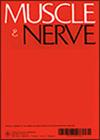低丙种球蛋白血症与 1 型肌营养不良症的感染风险
IF 3.1
3区 医学
Q2 CLINICAL NEUROLOGY
引用次数: 0
摘要
导言/目的高丙种球蛋白血症是1型肌营养不良症(DM1)的常见特征,但却未得到充分认识。我们的研究旨在确定队列中免疫球蛋白 G(IgG)缺乏的频率,检查免疫球蛋白水平与 DMPK 基因中胞嘧啶-胸腺嘧啶-鸟嘌呤(CTG)重复长度之间的关联,并评估 IgG 水平是否与 DM1 患者感染风险增加有关。方法我们对2002年1月至2022年1月期间在澳大利亚悉尼康科德遣返总医院神经肌肉诊所就诊的65名成年DM1患者进行了一项单中心、回顾性横断面研究。我们系统收集并分析了所有患者的临床、实验室和遗传学数据,并提供了血清电泳和/或IgG水平结果。结果41%的DM1患者存在IgG缺乏症,尽管淋巴细胞计数、IgA、IgM和白蛋白水平正常。CTG 重复扩增大小与 IgG 缺乏程度之间存在关联(F = 6.3,p = .02)。讨论IgG缺乏是DM1患者的常见病,与CTG重复扩增大小有关。目前尚不清楚低丙种球蛋白血症是否与 DM1 感染风险增加有关。需要进行前瞻性多中心队列研究来评估这一问题。本文章由计算机程序翻译,如有差异,请以英文原文为准。
Hypogammaglobulinemia and infection risk in myotonic dystrophy type 1
Introduction/AimsHypogammaglobulinemia is a common yet under‐recognized feature of myotonic dystrophy type 1 (DM1). The aims of our study were to determine the frequency of immunoglobulin G (IgG) deficiency in our cohort, to examine the association between immunoglobulin levels and cytosine–thymine–guanine (CTG) repeat length in the DMPK gene, and to assess whether IgG levels are associated with an increased risk of infection in DM1 patients.MethodsWe conducted a single‐center, retrospective cross‐sectional study of 65 adult patients with DM1 who presented to the Neuromuscular Clinic at Concord Repatriation General Hospital, Sydney, Australia, between January 2002 and January 2022. We systematically collected and analyzed clinical, laboratory, and genetic data for all patients with available serum electrophoresis and/or IgG level results.ResultsForty‐one percent of DM1 patients had IgG deficiency despite normal lymphocyte counts, IgA, IgM, and albumin levels. There was an association between CTG repeat expansion size and the degree of IgG deficiency (F = 6.3, p = .02). There was no association between IgG deficiency and frequency of infection in this group (p = .428).DiscussionIgG deficiency is a frequent occurrence in DM1 patients and is associated with CTG repeat expansion size. Whether hypogammaglobulinemia is associated with increased infection risk in DM1 is unclear. A prospective multicenter cohort study is needed to evaluate this.
求助全文
通过发布文献求助,成功后即可免费获取论文全文。
去求助
来源期刊

Muscle & Nerve
医学-临床神经学
CiteScore
6.40
自引率
5.90%
发文量
287
审稿时长
3-6 weeks
期刊介绍:
Muscle & Nerve is an international and interdisciplinary publication of original contributions, in both health and disease, concerning studies of the muscle, the neuromuscular junction, the peripheral motor, sensory and autonomic neurons, and the central nervous system where the behavior of the peripheral nervous system is clarified. Appearing monthly, Muscle & Nerve publishes clinical studies and clinically relevant research reports in the fields of anatomy, biochemistry, cell biology, electrophysiology and electrodiagnosis, epidemiology, genetics, immunology, pathology, pharmacology, physiology, toxicology, and virology. The Journal welcomes articles and reports on basic clinical electrophysiology and electrodiagnosis. We expedite some papers dealing with timely topics to keep up with the fast-moving pace of science, based on the referees'' recommendation.
 求助内容:
求助内容: 应助结果提醒方式:
应助结果提醒方式:


